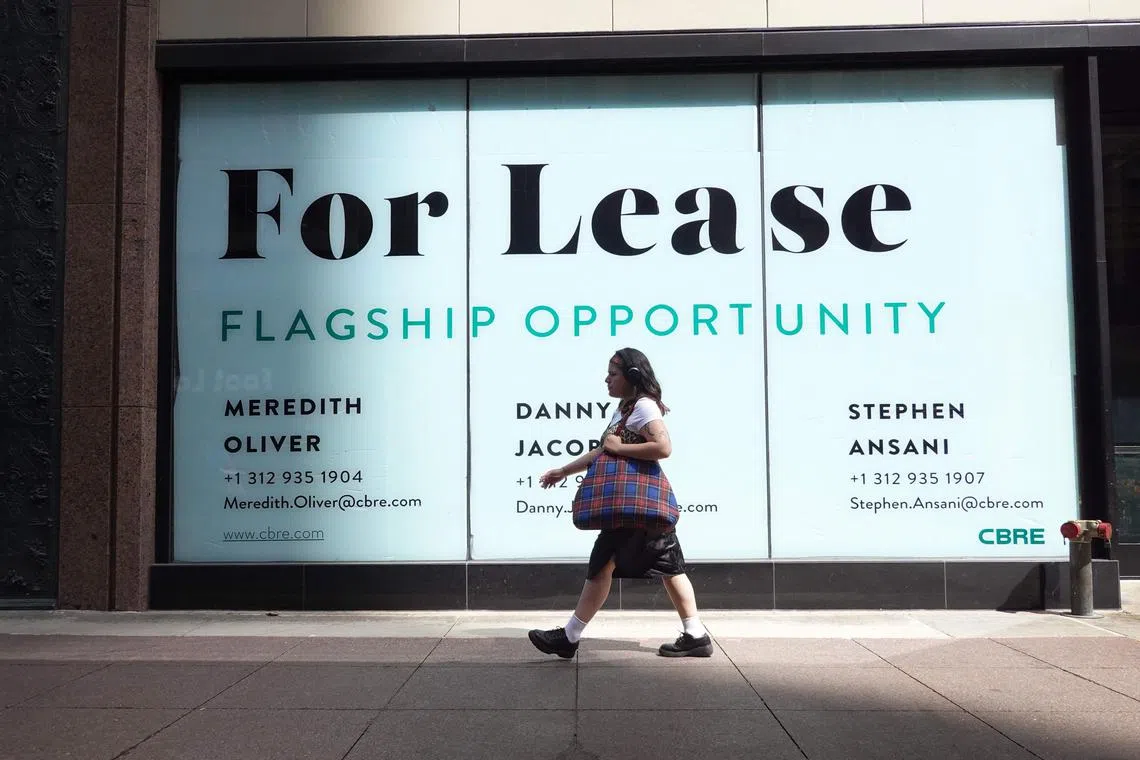Commercial real estate prices in the US fall for first time since 2011
Sign up now: Get ST's newsletters delivered to your inbox

The fall in US commercial real estate prices heightens the risk of more financial stress in the banking industry.
PHOTO: AFP
Follow topic:
WASHINGTON – US commercial real estate prices fell in the first quarter for the first time in more than a decade, according to Moody’s Analytics, heightening the risk of more financial stress in the banking industry.
The decline of less than 1 per cent was led by drops in multi-family residences and office buildings, data culled by Moody’s from courthouse records of transactions showed.
“Lots more price declines are coming,” Moody’s Analytics chief economist Mark Zandi said.
The danger is that this will compound the difficulties confronting many banks at a time when they are fighting to retain deposits in the face of a steep rise in interest rates over the past year.
Excluding farms and residential properties, banks accounted for more than 60 per cent of the US$3.6 trillion (S$4.8 trillion) in commercial real estate loans outstanding in the fourth quarter of 2022, with smaller institutions particularly exposed, according to the United States Federal Reserve’s semi-annual Financial Stability Report published on May 8.
The magnitude of a correction in property values “could be sizeable and therefore could lead to credit losses” at banks, the report said.
Fed vice-chair for supervision Michael Barr told lawmakers on Tuesday that supervisors have increased their oversight of financial institutions with significant exposure to the sector. “We’re looking quite carefully at commercial real estate risks,” he said.
The price declines seen so far have been more marked for higher-priced properties, according to commercial property company CoStar Group. Its value-weighted price index has fallen for eight straight months and in March stood 5.2 per cent lower than a year ago.
Transactions, though, have been limited in a market still coping with the aftershocks of the pandemic.
The rise in employees working from home has driven some downtown retailers and restaurants out of business and forced owners of office buildings to reduce rents to retain tenants or to sell altogether.
Post Brothers, a property investment company, recently bought a Washington office building that went for US$92.5 million in the autumn of 2019 for US$67 million, while Clarion Partners is offering a San Francisco office tower for roughly half of what it paid around a decade ago.
Banks held more than US$700 billion in loans on office buildings and downtown retailers in the fourth quarter of 2022, according to the Fed. More than US$500 billion of that was extended by smaller lenders.
Lending officers at banks told the Fed that they further tightened credit standards on commercial real estate loans in the first quarter.
Mr Paul Ashworth, chief North America economist for Capital Economics, sees the risk of a “doom loop” developing, with a pullback in lending by banks leading to a steeper drop in commercial real estate prices, in turn prompting further cuts in credit.
One potential bright spot: The big run-up in prices in past years has left many borrowers with substantial equity cushions in the properties they own. That reduces the dangers of defaults and limits the potential losses for lenders.
The loan-to-value ratio of mortgages backed by office buildings and downtown retail properties was in the range of 50 per cent to 60 per cent on average at the end of 2022 for credit extended by bigger banks, based on data collected by the Fed.
“Delinquencies and defaults will rise, but I don’t think we will see a lot of forced sales,” Moody’s Mr Zandi said.
He forecasts prices dropping about 10 per cent, assuming the US skirts a recession. If it does not, the declines could get a lot worse.
“We are on a razor’s edge here,” he said. BLOOMBERG

